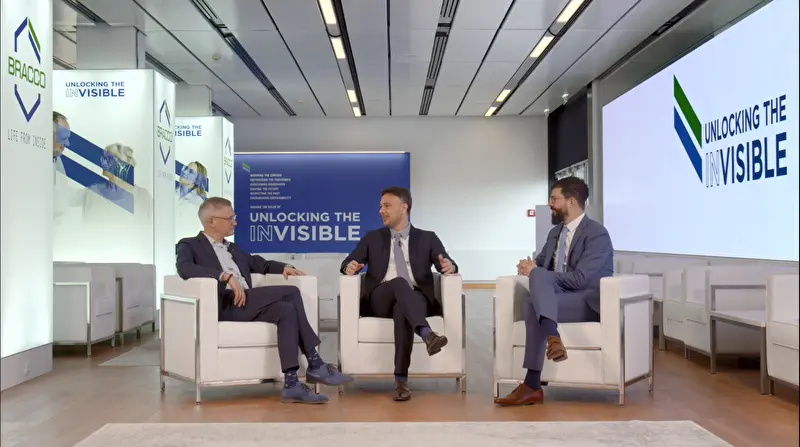AI and Radiology: mutual game changers
A dialogue with EuSoMII President and Vice-President.

The increasing numbers of clinical applications of artificial intelligence (AI), commercial algorithms and the growing availability of big data are helping healthcare professionals to overcome the barriers of human fatigue and receive support in their daily practice.
AI can be the pivotal game changer in next generation clinical diagnostic imaging and, vice versa, Radiology could be the game changer for AI research, driving the development of AI-powered applications in the wider clinical community.
At ECR 2023 in Vienna, we discussed what means to be "Gamechangers in radiology" and how this aligns with the Bracco motto "Unlocking the Invisible".
In a relaxed and informal interview, Peter van Ooijen (Associate Professor of Medical Imaging Informatics, Department of Radiation Oncology and Machine Learning Lab Coordinator at DASH Data Science Center in Health at University Medical Center Groningen, The Netherlands) and Daniel Pinto dos Santos (Assistant Professor of Radiology at the University Hospital of Cologne and Consultant Radiologist at the University Hospital of Frankfurt) respectively current president and vice-president of the European Society of Medical Imaging Informatics (EuSoMII), discussed with us the challenges, ambitions and opportunities that EuSoMII can address with the help of partners such as Bracco.
“Obviously, AI is here to stay and will change the game of radiology. What we, as Society, want to do is actually something that Bracco supports a lot: educating people
“It's not just blindly following the hype, but it's looking what the technology can do for you, what it can do for the patient, how you can bring it in so that it actually provides something meaningful” said Prof. Pinto dos Santos.
“The big challenge is getting AI into the clinical practice, now. We've seen enormous developments in the past years and now making that last step to really start using it, that's the big goal. That's the big challenge also for organizations like EUSOMII to support that transition and to help people to understand what it's about, how they should use it, what the caveats are, and what is the way to implement it in the correct way in clinical healthcare”, added Prof. van Ooijen.
For the development of innovative solutions, both professors underlined the crucial synergic role of clinical and computer scientists, because the way in which the data are presented and used, in develop innovation, is essential to make them meaningful. “Someone wrote: don't do radiology without radiologists in AI. But also vice versa is true: don’t do AI without computer scientists. Their interaction is essential to interpret AI performance”, affirmed Prof. van Ooijen, and echoes the words of Prof. Pinto dos Santos about the role of industry: "We all work together: radiologists, computer scientists, industry together to provide benefits to the patients, because that's what matters in the end".
And together, they underlined the need of education on new technology. “On one hand there are AI enthusiasts who may be over enthusiastic and not see the risks sometimes. Then there are the AI averse who don't want to use it, just on principle. And I think education is the only thing that can really help mitigate both sides and really make it clear that there are benefits, there are risks”. Said Prof. Pinto dos Santos, while Prof. van Ooijen concluded that “We have a very active Young Club that is organizing all kinds of activities, also together with Bracco, to educate and to get younger people more involved. We try to also help them to grow into new roles in the future. That's a very important thing to do”.
A path that is still ongoing, but fruitful of opportunities: that is the meaning of Unlocking the Invisible for Bracco.
We are revealing something that is not only visual, but also tangible opportunities that cannot be seen at first glance.